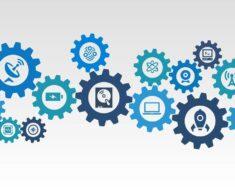
Understanding EIDV – what is electronic identity verification
Electronic ID verification is one of the most efficient modern security systems in use today. This digital verification process requires the public to own digital IDs which are run through EIDV systems to check for authenticity i.e., verification.
Electronic verification is increasingly becoming a standard security feature among most businesses. The methods are even more pushed thanks to the application of KYC and AML regulations that are compulsory for most digital institutions especially those dealing with financial processes. Online identity verification is one of the easiest and most efficient ways to achieve and scale KYC CIP (Customer identification programs).
Types of electronic verification systems
There are multiple EIDV systems that can be used for customer or client identification for know your customer compliance. Each one of these different types of processes has its own benefits and each one is also designed for a different purpose.
Document verification
Document verification refers to using digital solutions or EIDV to verify certain identity documents such as passports, national or state ID cards, utility bills, tax statements, etc. Ideally, only documents with photos are considered for correct verification.
The document verification process is fast, simple, and easy. The three fundamental steps of EIDV for documents include submission of user information, evaluation of credentials, and lastly, verification and results. This type of verification is one of the most accurate methods of EIDV. The data provided is state or country issued, and the resulting standardization of features such as holograms, MRZ lines, etc. makes forgery much easier to identify.
Offers quick and hassle-free electronic id check process alerting for any forged, modified, illegal, or false information.
Face/Selfie verification
Facial recognition software is one of the most trusted ones available within the EIDV industry.
Watchlist Screening
A watchlist is a list generated by an organization of adequate authority that lists down the names of people and organizations that are of potential harm to the state or its people. There are multiple watchlists that are used for customer or client screening purposes. These include, but aren’t limited to:
- Specially Designated Nationals and Blocked Persons List (SDN)
- Specially Designated Global Terrorist (SDGT) Lists
- UN Sanctions
- Watchlists maintained by Interpol, Europol, FBI
- Exit Control List
Watchlist screening is essential for financial institutions and is a key part of the implementation of AML or Anti-Money Laundering laws.
While essential, watchlist screening is also an extremely tedious and time-consuming process.
SSN authentication
the Social Security Administration issued a Social Security Card to every citizen . The number designated to each card i.e., the Social Security Number is one of the most common forms of EIDV in the United States. Electronic ID verification through this number is a basic minimum requirement of the Customer Identification Program within KYC in the United States.
EIDV – The different types of solutions
Electronic verification technology utilizes the above systems to offer specific solutions to businesses.
- KYC – Know Your Customer
- KYB – Know Your Business
- KYI – Know Your Investor
- AML Screening
- Risk Assessment





